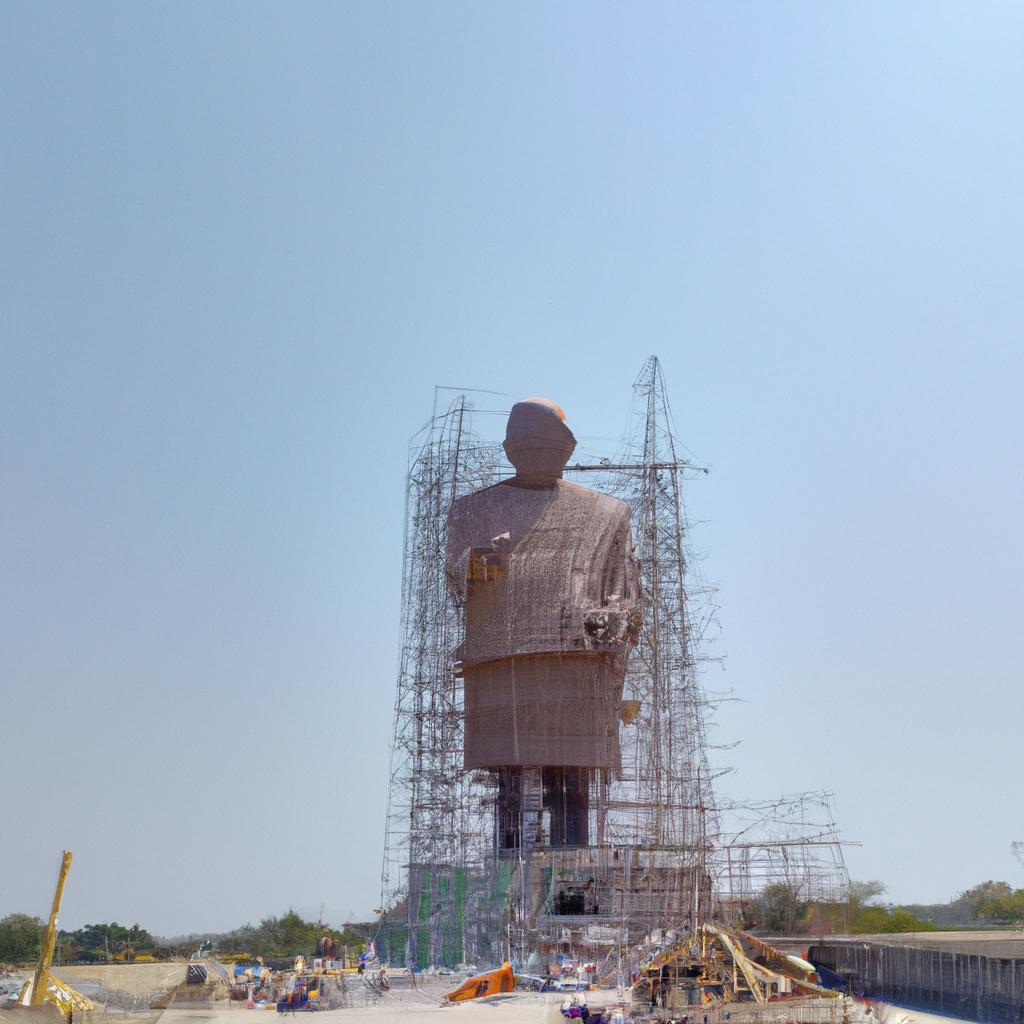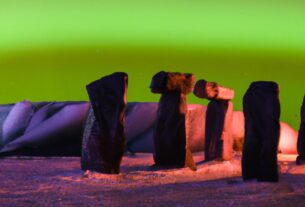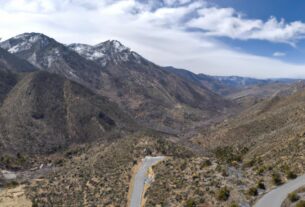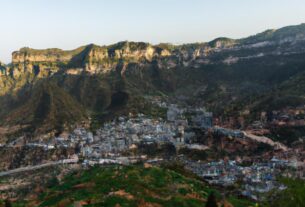India’s pride stands tall in the form of the Statue of Unity, a monumental statue located in the vibrant state of Gujarat. Soaring to a height of 182 meters, this iconic statue pays tribute to Sardar Vallabhbhai Patel, a key figure in India’s struggle for independence. More than a mere piece of art, the Statue of Unity has become a symbol of India’s unity, strength, and unwavering pride.
The History Unveiled
A Vision Takes Shape
In 2010, the visionary then Gujarat Chief Minister, Narendra Modi (now India’s esteemed Prime Minister), initiated the project to honor Sardar Patel, a man pivotal to India’s journey to freedom. The statue was to be erected on an island in the Narmada River, flowing through the picturesque state of Gujarat.
Planning and Design Excellence
Immersed in a mammoth planning process, the project brought together a team of experts, including architects, engineers, and designers. Working in harmony, they aimed to craft a statue that would authentically reflect the essence of Sardar Patel while representing India’s unity and strength.
Skilled sculptor Ram Sutar, renowned for his bronze sculptures, brought the statue’s magnificent design to life. Meanwhile, the Indian construction company Larsen & Toubro undertook the monumental task of transforming the vision into reality.
The Marvelous Construction Journey
A Timeline of Triumph
The construction of the Statue of Unity commenced in 2013, taking almost five dedicated years to complete. Larsen & Toubro spearheaded the engineering, design, and construction, showcasing India’s craftsmanship to the world. Finally, on October 31, 2018, India’s Prime Minister Narendra Modi unveiled the statue, marking Sardar Patel’s 143rd birth anniversary.
Challenges Turned into Triumphs
The road to erecting the Statue of Unity was not without obstacles. Adverse weather conditions posed significant challenges, with the site situated near the mighty Narmada River, prone to severe floods during the monsoon season. Around-the-clock efforts ensured the site remained safe and secure during this period.
Transporting construction materials to the remote location and towering height of the statue posed another significant hurdle. The construction team ingeniously employed helicopters and cranes, devising innovative transportation techniques to overcome this obstacle.
Unveiling Innovative Techniques
The construction process embraced cutting-edge technologies to guarantee the statue’s stability and longevity. A state-of-the-art vibration control system equipped the statue to withstand high-speed winds. Its bronze cladding was meticulously designed to resist corrosion and weathering, ensuring a timeless shine.
A Grand Unveiling and an Inspiring Inauguration
The Unveiling Ceremony
On October 31, 2018, the world witnessed the grand unveiling of the Statue of Unity, a momentous occasion coinciding with Sardar Vallabhbhai Patel’s 143rd birth anniversary. The ceremony, graced by numerous dignitaries, unfolded with cultural performances, captivating speeches, and a mesmerizing laser light show. Prime Minister Modi himself unveiled the statue, describing it as a testament to India’s technical and engineering capabilities.
Dignitaries That Stood Witness
Joining Prime Minister Modi were an array of dignitaries from India and around the world. Chief Ministers of several Indian states, parliament members, and leaders from diverse political parties all graced the occasion. The event also saw the presence of foreign dignitaries, including the esteemed Crown Prince of Abu Dhabi, Sheikh Mohammed bin Zayed Al Nahyan. Their attendance reflected the worldwide significance of the Statue of Unity, celebrating India’s achievements.
Illuminating India’s Legacy
The unveiling and inauguration of the Statue of Unity proved historic for India and beyond. Serving as a beacon of India’s unity, strength, and pride, it stands tall as a symbol of the country’s engineering and architectural prowess. The extravagant ceremony showcased India’s cultural diversity, weaving together vibrant performances representing various Indian states.
Moreover, the statue’s inauguration has had a profound impact on India’s economy and tourism industry. Millions of tourists flock to witness this magnificent creation, fueling local businesses and generating employment opportunities. The statue has truly become a source of national pride, inspiring Indians to chase their dreams.
Symbolism and Splendor: The Statue’s Essence
Tall, Bronze, and Majestic
Reaching a staggering height of 182 meters, the Statue of Unity stands as the world’s tallest statue. Crafted from bronze and reinforced with an iron framework, the statue’s structure weighs approximately 1700 tons. Its engineering marvel extends to a 58-meter base, a feat in itself.
Bracing against extreme weather conditions, the statue’s design accounts for high-speed winds and earthquakes. Illuminated brilliantly at night, the statue’s unique lighting system allows it to shine from afar, captivating hearts and minds.
A Cultural and Historical Emblem
Beyond its physical splendor, the Statue of Unity symbolizes India’s remarkable journey to independence and the sacrifices made by its leaders. Modeled after Sardar Patel, this revered figure played a pivotal role in unifying India’s diverse states into one nation. The statue stands as a testament to Patel’s contributions and vision of a united India.
Reflecting India’s rich artistic heritage, the statue incorporates elements of traditional Indian art and architecture. It serves as a true masterpiece, combining artistic excellence and engineering prowess.
Experiences Abound
The Statue of Unity has transformed into a major tourist attraction, attracting millions of visitors annually. Venture beyond the statue’s magnificence, and you’ll discover a beautifully landscaped garden, offering a serene retreat. Visitors can embark on a boat ride along the picturesque Narmada River or explore the nearby Sardar Sarovar Dam.
A museum dedicated to Sardar Patel stands proudly alongside the statue, immersing visitors in his life and achievements. With interactive exhibits, it offers an engaging and informative experience. The surrounding area also boasts delightful restaurants and souvenir shops, completing a fulfilling visit.
A Timeless Legacy of Unity and Pride
The Statue of Unity stands as a remarkable achievement for India, epitomizing its unity, strength, and indomitable spirit. Its construction attests to India’s prowess in engineering and architecture, capturing the world’s attention since its unveiling.
This iconic statue has emerged as a magnet for tourists, propelling India’s economy and tourism industry to new heights. Beyond economics, it has ingrained itself in India’s cultural identity, fostering a sense of national pride. It honors India’s rich history and pays homage to its great leaders.
As we celebrate the success of the Statue of Unity, our gaze turns toward the future, brimming with limitless possibilities. This monumental creation will continue to inspire future generations, symbolizing India’s unity and strength. Together, let us honor and cherish this remarkable tribute.
Thank you for accompanying me on this captivating journey, unveiling the story behind India’s most awe-inspiring landmark.
Citations and Relevant Hyperlinks:



